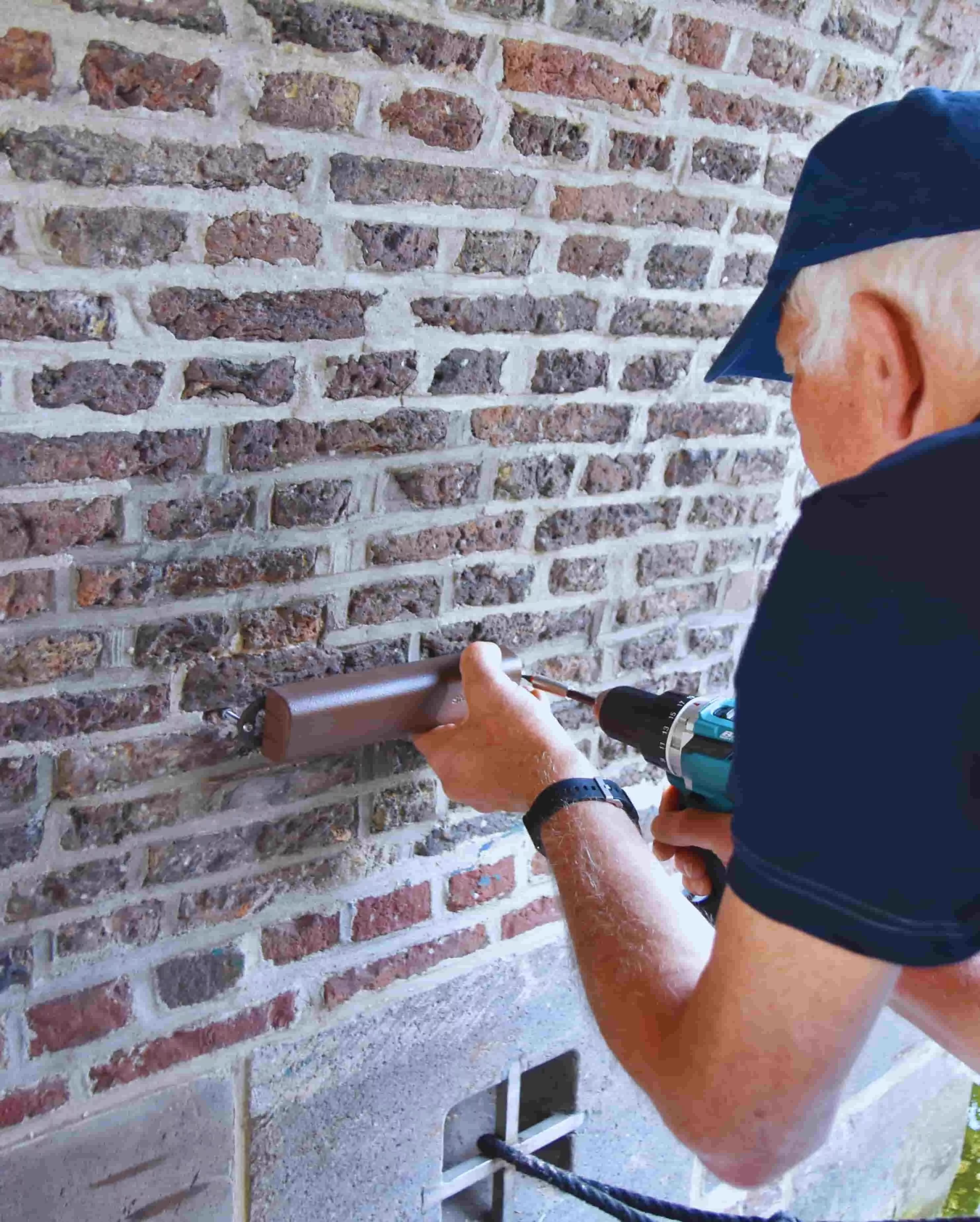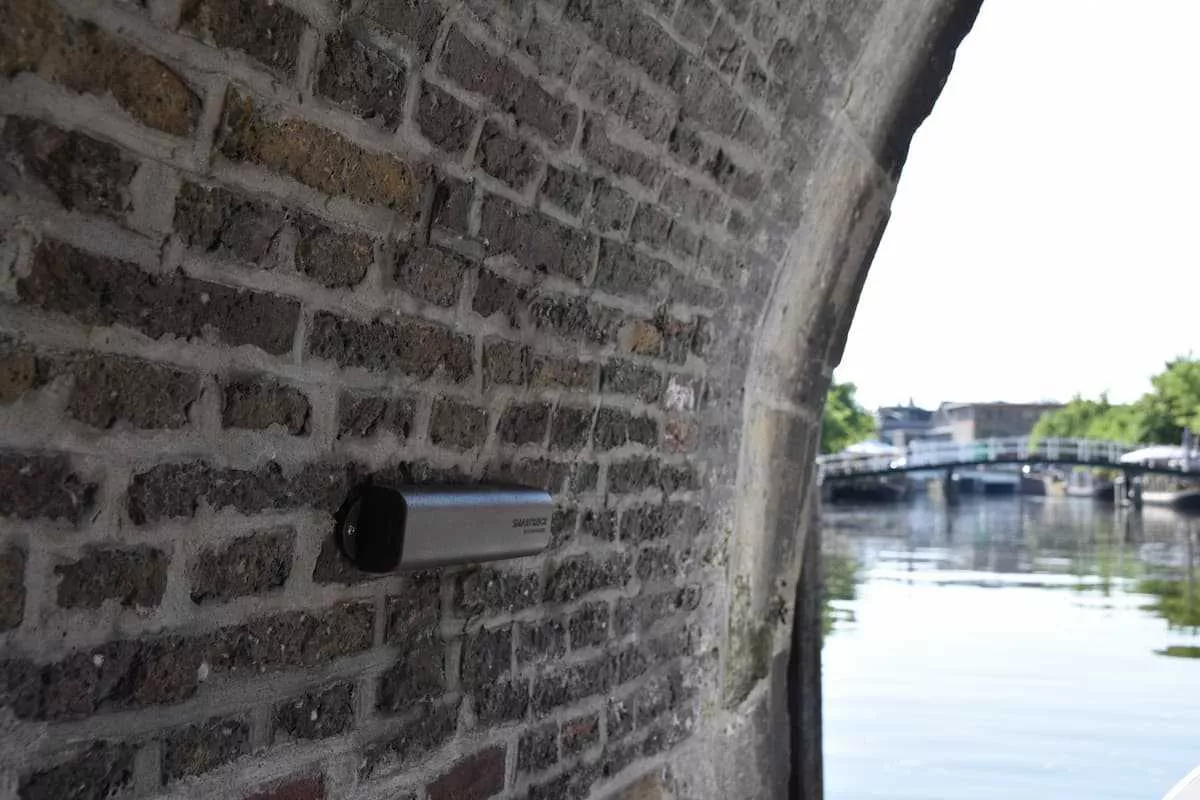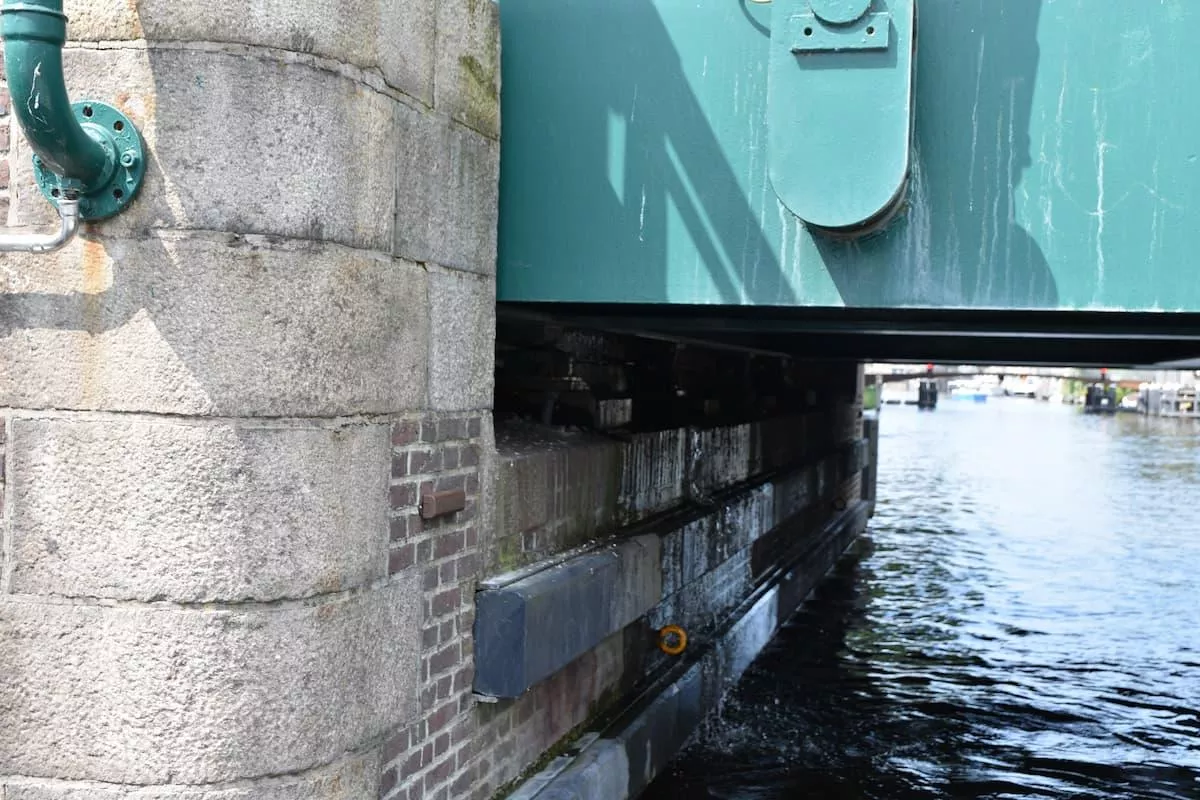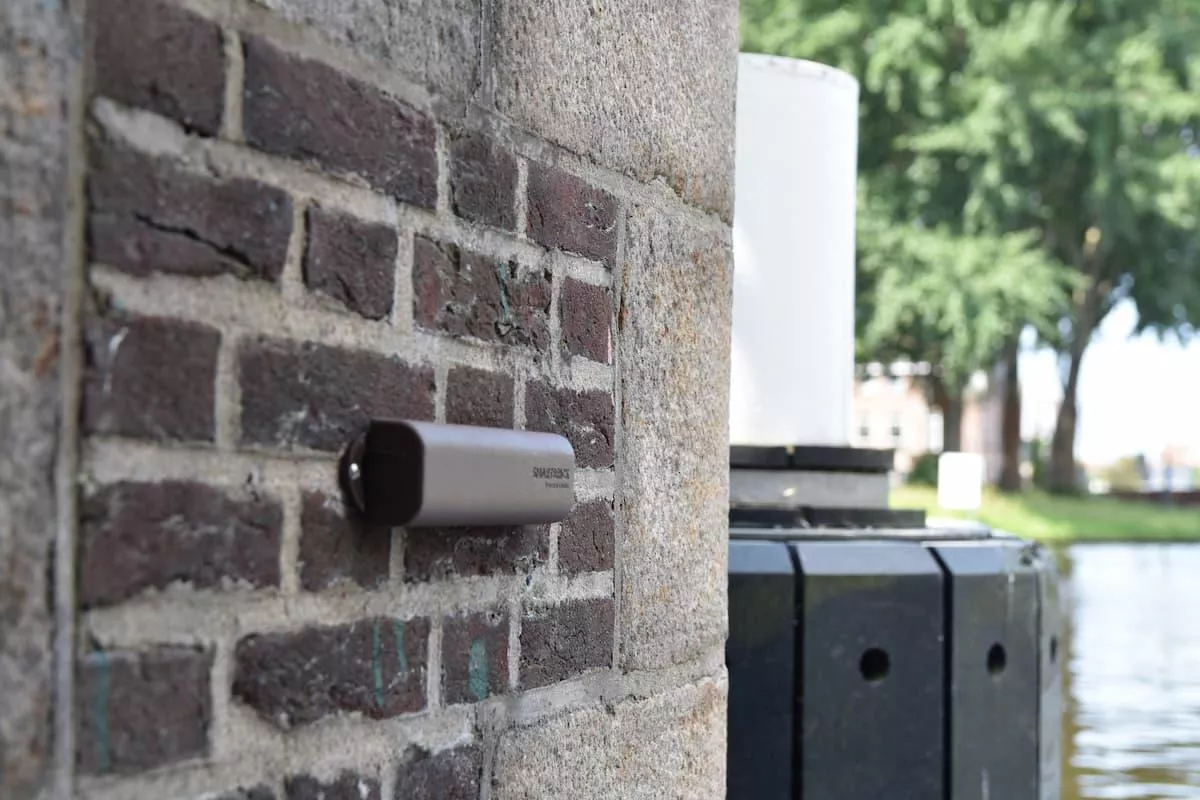Building trust and safety with SmartBrick
SmartBrick, Leiden has access to an advanced bridge monitoring system that:
- continuously records inclination data and provides real-time insight into structural stability
- identifies deviations exceeding the thresholds
- can be used for predictive analysis for early problem detection
The benefits for the municipality include:
- faster and more targeted maintenance through data-driven insights
- elimination of uncertainty, panic and emergency fixes
- lower repair and maintenance costs
- extended lifespan of bridge structures
In addition, SmartBrick:
- contributes to the protection of historic heritage
- demonstrates how modern sensor technology can support safer and more sustainable infrastructure

Easy installation of SmartBrick
The wireless sensors are small, discreet, and simple to install. They continuously provide data that instantly reveals any deviations, enabling the city to protect and preserve not only its bridges but also its canals and quay walls for the future.
The compact design of SmartBrick allows for flexible installation on bridge structures without major modifications or disruption. Each sensor unit contains advanced inclination sensors that detect even the smallest changes in tilt angle. Data is transmitted wirelessly to a central interface, where deviations from predefined reference values are immediately visible.
With no need for an external power supply, installation is quick and efficient, reducing both setup time and environmental impact.
Sixteen sensors monitor four bridges
After the installation of the SmartBrick system, sixteen sensors were deployed across four bridges. All measurement data is transmitted wirelessly to a central web interface, which provides real-time insight into the current tilt angles and structural stability of each bridge.
The system is equipped with built-in algorithms that continuously process the raw inclination data. Deviations are compared against predefined threshold values. Whenever a sensor detects an exceedance, the system automatically generates an alert for the maintenance teams. This ensures that potential structural issues can be identified early and addressed immediately.
-
Wireless
-
Easy to install
-
Scalable
-
Real-time insights
Early detection of deviations
By identifying small deviations at an early stage, SmartBrick supports predictive maintenance. This reduces the risk of structural failures, lowers maintenance costs, and extends the lifespan of bridge structures. Potential problems can be investigated and resolved before they escalate into serious damage or safety risks.
As SmartBrick collects more historical data, the system’s predictive capabilities improve. The built-in algorithms apply techniques such as time-series analysis and anomaly detection to identify new trends and increase the accuracy of predictions.
SmartBrick continuously records inclination data, building a large dataset over time. This dataset is analyzed with machine learning algorithms to identify trends and behavioral patterns for each bridge.
Based on the collected data, the system establishes normal operating parameters and defines reference values for tilt. New measurements are compared in real time against these reference values. When deviations exceed the thresholds, the system registers them.




Structural monitoring
By continuously learning from the actual behavior of each bridge, the predictive models are refined. This ensures that alerts become increasingly reliable and that maintenance teams gain earlier insight into abnormal patterns.
This self-learning approach makes SmartBrick an indispensable tool for long-term structural monitoring. It enables the municipality of Leiden to optimize maintenance plans proactively, reduce risks, and systematically improve the safety and lifespan of its bridges.
SmartBrick contributes to safer bridges and a safer city
Thanks to these smart sensors, Leiden can better protect its historic bridges and keep them in good condition. The sensors continuously measure small changes in stability and send early alerts when deviations occur. This way, the monuments that give the city its character can be preserved for future generations.
SmartBrick gives residents confidence in the safety of their city and shows how modern technology can help manage heritage in a smart and sustainable way.


